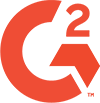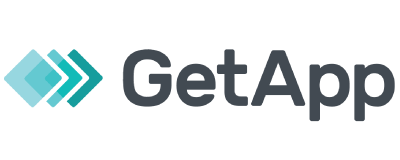Finding and hiring the right people for your business is one of the most important processes of recruitment, no matter how big or small your company is. However, there are two distinct processes involved in this task: sourcing vs recruiting. Knowing the difference between them can help you optimize your hiring strategy and save time and resources. Sourcing and recruiting are related but not identical. The same person or department often performs both tasks. However, they have different goals, methods, and outcomes. In this article, we will explain what each process entails, how they overlap, and how they differ.
What Is Sourcing
Sourcing is finding and attracting potential candidates for open positions in a company. It is the initial phase of talent acquisition, using diverse methods and channels to connect with qualified candidates. Sourcing can help recruiters build a pipeline of talent. It also reduces hiring costs and time while improving the quality and diversity of hires.
Recruiters or talent acquisition professionals typically handle this process, which includes key activities such as Boolean searches, social media recruiting, and employee referrals. They also attend networking events and job fairs to meet potential candidates in person.
Sourcers’ Key Responsibilities
- Talent Sourcing: The primary responsibility of a sourcer is to source and identify potential candidates for open positions. Sourcers find candidates via various methods and channels like job boards, databases, social media platforms, and professional networking sites. They also proactively reach out to passive candidates who may not be actively searching but possess the right skills and qualifications.
- Candidate Screening: Once potential candidates have been identified, sourcers are responsible for screening and evaluating their qualifications. They review resumes, cover letters, and online profiles, assessing candidates' skills, experience, and cultural fit to shortlist the most suitable candidates.
- Market Research: Sourcers are also responsible for conducting market research to gain insights into industry trends, competitors, and the availability of talent.
- Collaborating with Hiring Managers: Sourcers work closely with hiring managers to understand the specific requirements for each position. They collaborate to develop search strategies for specific roles.
- Continuous Learning and Improvement: Sourcers are constantly staying up-to-date with the latest candidate sourcing techniques, tools, and technologies. They are staying informed about recruitment best practices to improve their strategies and performance.
With the talent shortage among other issues, sourcing today is not an easy job. Smaller recruitment agencies with limited budgets suffer even more when investing in an ATS can cost you over $200 a month [1], and CRM tools can cost you over $1000 monthly. [2]
Sourcing & Recruiting Tools
Sourcers often juggle multiple tasks—resume reviews, candidate outreach, and coordination with hiring managers, while working under tight timelines and limited resources.
Manatal Application Tracking System simplifies this by combining ATS and CRM tools into one platform. Starting at just $15 per user per month, it streamlines sourcing workflows with drag-and-drop pipelines and centralized candidate data, helping recruiters save time and stay organized.
{{cta}}
What Is Recruiting
Recruiting is the process of attracting, shortlisting, selecting, and appointing suitable candidates for jobs within an organization. It involves identifying the skills and qualifications required for a position, developing an employer brand, and implementing recruiting technologies. Recruiting also involves managing relationships with qualified candidates and guiding them through interviews, evaluations, and hiring processes.
Recruiters’ Key Responsibilities
Although similar, or often mistaken as the same position, recruiters’ responsibilities are a bit different.
- Job Analysis: Recruiters are responsible for understanding the requirements of the job position that needs to be filled. This involves conducting a thorough analysis of the job description, identifying the necessary skills and qualifications, and determining the key responsibilities and expectations of certain roles.
- Finding and Attracting Candidates: Once the job requirements are clear, it’s the recruiters’ job to actively find and attract potential candidates. Recruiters source candidates through various strategies such as job postings, social media recruitment, networking, and partnering with universities and professional organizations.
- Screening and Interviewing: Recruiters are responsible for conducting initial screenings and interviews to evaluate candidates' suitability for the position. This includes reviewing resumes, assessing qualifications, and conducting phone or video interviews.
- Assessing Skills and Competencies: Recruiters are assessing candidates' skills and competencies via technical assessments, administering aptitude tests, or organizing assessment centers.
- Conducting Background Checks: As part of the recruitment process, recruiters are responsible for conducting thorough background checks on potential hires. This may include verifying educational qualifications, employment history, and references, and conducting criminal record checks to ensure the credibility and reliability of the applicants.
- Managing the Hiring Process: The recruiters should coordinate and manage the entire hiring process, from scheduling interviews and coordinating feedback from interviewers to communicating with candidates at various stages of the selection process. Recruiters must ensure a smooth and transparent process to provide a positive experience for both the organization and the candidates.
- Building and Maintaining Relationships: Recruiters play a key role in building and maintaining relationships with candidates, hiring managers, and other stakeholders involved in the recruitment process. They must establish rapport, communicate effectively, and provide regular updates to ensure a positive candidate experience and a smooth hiring process.
- Staying Updated on Recruitment Trends: Recruiting is a constantly evolving field, so recruiters are responsible for keeping up with the latest trends, technologies, and strategies.
Sourcing vs Recruiting
Sourcing and recruiting can work together to optimize the entire recruiting process. Some organizations may have separate teams or individuals for sourcing and recruiting, while others may have one person or team handle both functions. Here are some key differences between sourcing vs recruiting.
1. Timeline
The timeline for sourcing and recruiting can vary depending on the needs of the company and the position being filled. Sourcing typically occurs earlier in the hiring process, as it involves proactively searching for and identifying potential candidates. Once qualified candidates have been identified, the recruiting process begins, which involves evaluating and selecting those candidates for the position through methods such as application review, interviewing, and candidate assessments.
2. Roles and responsibilities
The sourcing process is carried out by human resources (HR) professionals who work alongside recruiters to compile a group of qualified prospective candidates for a particular role. Sourcers use various techniques, such as social media outreach and competitive research, to find the right candidates. Recruiting is also performed by HR professionals who work with sources to handle the rest of the hiring process. Recruiters are in charge of administrative tasks, such as posting openings on job boards, reviewing applications, coordinating schedules, and meeting any other client needs.
3. Metrics and outcomes
Sourcing measures metrics and outcomes such as the number of candidates sourced, the quality of candidates sourced, the response rate of candidates, the conversion rate of candidates, and the cost per hire. Sourcing aims to generate a large and diverse pool of qualified candidates who are interested in the company and the role. Recruiting measures metrics and outcomes such as the time to fill, the offer acceptance rate, the hiring manager satisfaction, the candidate satisfaction, and the retention rate. Recruiting aims to select and hire the best candidates who meet the role requirements and fit the company culture.
4. Passive Candidates
Sourcing involves targeting passive candidates, who are those who might have other jobs already or aren’t necessarily looking for another job with the organization. They might have the qualifications that sourcers identify through their social media profiles, referrals, or other research. Recruiting targets active candidates, who are people who apply for jobs within a company. They may or may not have the right qualifications, but recruiters typically identify this through pre-screening and reviewing their qualifications.
Sourcing in Action
To see sourcing in practice, imagine a tech company seeking a specialized AI engineer—a role requiring rare skills in a competitive market. A sourcer might:
- Use LinkedIn’s advanced search features to identify professionals with AI-related skills and experience.
- Attend industry conferences or webinars to network with potential candidates and discover emerging talent.
- Engage in online communities like GitHub or Stack Overflow to find developers who have contributed to relevant projects.
- Reach out to passive candidates with personalized messages, highlighting the company’s unique opportunities.
By proactively building a talent pool, the sourcer ensures recruiters have high-quality candidates to work with for current and future openings.
Recruiting in Action
Now, let’s see recruiting in action. After the sourcer identifies potential AI engineer candidates, the recruiter steps in:
- The recruiter reviews the list of candidates and invites them to apply or move to the next stage. They conduct initial phone interviews to assess the candidates' interest, availability, and basic qualifications.
- The recruiter organizes technical interviews with the hiring manager and team to ensure the candidate's skills align with the role.
- Following the interviews, the recruiter holds feedback discussions with the hiring team and extends an offer to the chosen candidate.
- Finally, the recruiter oversees the onboarding process to ensure a smooth transition for the new hire into the company.
Throughout the process, the recruiter maintains clear communication, providing updates and ensuring a positive candidate experience.
Conclusion
Combining sourcing and recruiting integrates these two functions to streamline the hiring process. There are several ways that a business can combine sourcing and recruiting. One of the simplest is to have the recruiter deal with both sourcing and recruiting as part of their role. Having one person or team handle both sourcing and recruiting makes the hiring process more streamlined and simplified. There is no need to transfer information or coordinate between different parties, which can reduce errors and delays
Frequently Asked Questions
Q: What tools and technologies do sourcers typically use?
A: Sourcers rely on tools like applicant tracking systems (ATS) such as Manatal to manage hiring workflows, and platforms like LinkedIn Recruiter to search for and connect with candidates. Sourcing tools help them find passive talent across multiple channels, while email automation platforms streamline candidate communication.
Q: How do sourcers and recruiters collaborate effectively?
A: Sourcers and recruiters collaborate by dividing their responsibilities. Sourcers focus on identifying and attracting potential candidates. Recruiters handle interviews and negotiate offers. They use shared tools, like ATS platforms, to aid their tasks. Regular check-ins and feedback maintain open communication. This process ensures sourcers align with job requirements. Recruiters provide insights into candidate suitability. This collaboration leads to an efficient and seamless hiring process.
Q: What metrics are used to measure sourcing success?
A: Key sourcing metrics include response rates to outreach messages, quality of sourced candidates (measured by interview-to-hire ratios), time to fill talent pipelines, cost per sourced candidate, and diversity metrics. Successful sourcing programs also track candidate engagement levels, source effectiveness across different channels, and long-term candidate relationship-building metrics that contribute to future hiring success.
Q: How is AI transforming sourcing and recruiting today?
A: AI is revolutionizing sourcing and recruiting by automating tasks like resume screening, candidate matching, and initial outreach via chatbots. It analyzes data to identify patterns in successful hires, improving candidate recommendations, and reducing bias. This allows sourcers and recruiters to focus on strategic tasks like relationship-building, boosting efficiency, and decision-making.
Q: What trends are shaping the future of sourcing and recruiting?
A: Trends like data analytics are optimizing hiring, while strong employer branding is key to attracting talent. The rise of remote work broadens talent pools, diversity initiatives shape strategies, and AI tools enhance candidate discovery. These shifts are making sourcing and recruiting more data-driven, inclusive, and candidate-focused in the years ahead.
—
Citations:
1. Forbes
2. Forbes





.png)






















.webp)

.webp)

.webp)
